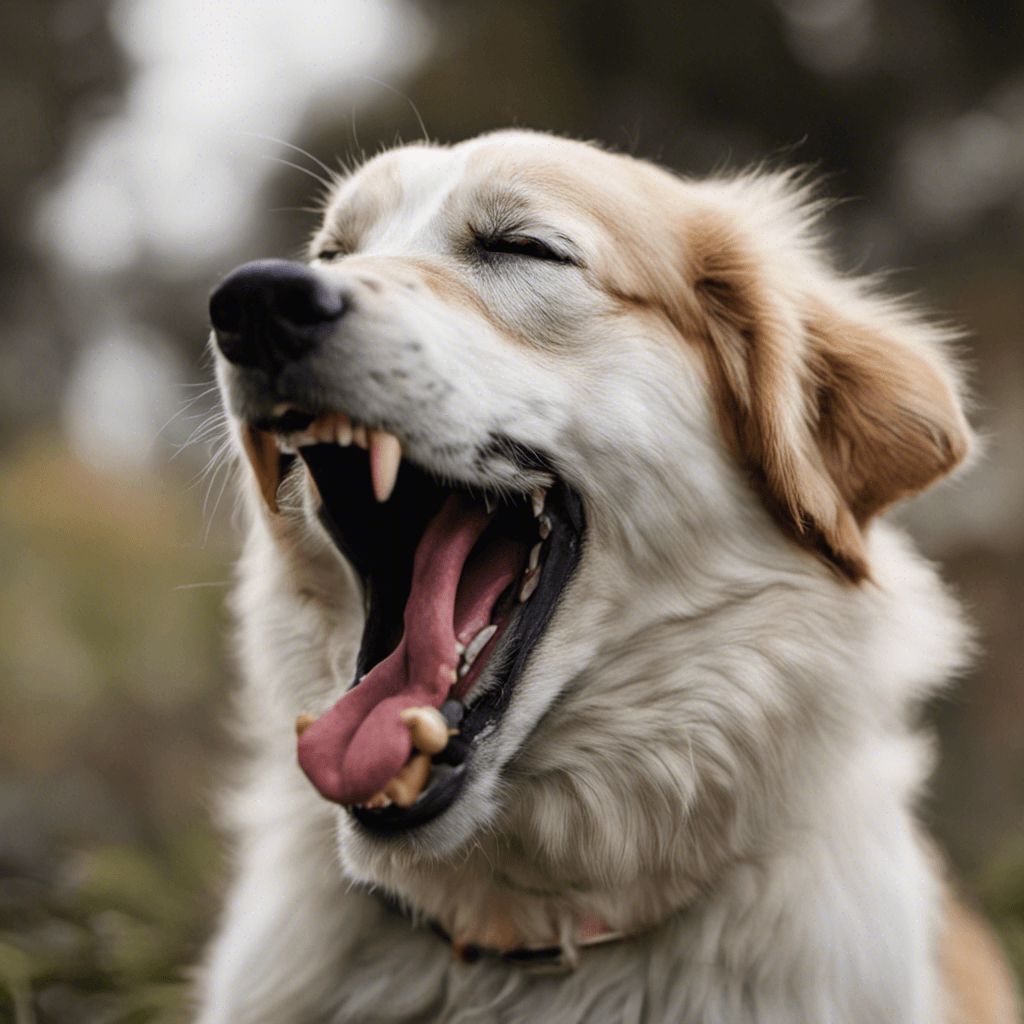Understanding the purpose behind a dog’s yawn can be quite intriguing. Fatigue and boredom alone don’t fully account for the phenomenon. There are several theories regarding why dogs yawn, spanning physiological and emotional aspects.
Physiological Explanations for Dog Yawning
From a physiological perspective, some studies propose that yawning may serve a role in stimulating the nervous system, akin to the effects of caffeine. Additionally, it could assist in cooling the brain when its temperature rises.
Research conducted by neuroscientist Robert Provine reveals that yawns, in dogs as well as humans and other vertebrates, often occur during transitions between different behavioral states, such as:
- Waking up
- Falling asleep
- Shifting from an anxious state to a calm one
- Transitioning from boredom to alertness
Emotional and Sociological Functions of Dog Yawning Dog yawning also appears to have emotional and sociological functions. Put simply, dogs yawn when they feel stressed.
According to Norwegian behaviorist Turid Rugaas, who authored “On Talking Terms With Dogs: Calming Signals,” yawning is among the signals dogs employ to soothe themselves during periods of stress or unease. Dogs may experience stress when:
- Entering a veterinary clinic
- Witnessing or hearing a household argument
- Being restrained or held tightly
- Being hugged by a child
- Approached by a stranger
Rugaas further explains that yawning and other “calming signals” can communicate a dog’s peaceful intentions to others, preventing conflicts or diffusing potentially threatening situations. To fully understand a dog’s emotions, it’s essential to consider their overall body language.
For instance, a stressed dog exhibiting frequent yawning may also be seen licking its lips, tucking its tail, flattening its ears, and maintaining an averted gaze or wide eyes.
Furthermore, a dog’s yawn can convey feelings of stress to its social group. A study at the Ontario Veterinary College, University of Guelph, discovered that when owners were present during routine physical exams, dogs exhibited fewer vocalizations, lower body temperatures, and increased yawning. Researchers suggested that yawning might serve as a social signal between dogs and their owners during these exams, emphasizing the importance of owners staying with their dogs during such situations.
Similar findings emerged from previous studies. Dogs yawned more when encountering familiar dogs compared to unfamiliar ones, and shelter dogs that received attention from handlers upon removal from their cages exhibited more yawning, sought more contact with people, and displayed more relaxed postures.
Yawning can also be contagious, not just among dogs but also among primates and horses.
According to Nick Dodman, BVMS, Dipl. ACVB, and Professor Emeritus at Tufts University School of Veterinary Medicine, the fact that dogs yawn more frequently when watching their owners yawn, compared to when observing unfamiliar individuals, suggests that dogs may possess empathy. This indicates that dogs are not only self-aware but also attuned to the emotions of others.
What Does It Indicate When a Dog Yawns Excessively?
If you notice your dog yawning excessively, along with other stress-related indicators such as a tucked tail, flattened ears, avoidance, cowering, averted gaze, lip licking, and wide eyes, it’s safe to assume that your dog is feeling fearful, uncertain, anxious, or stressed about the ongoing situation or interaction.
In her book “Doggie Language,” author and illustrator Lili Chin explains that a stress yawn is typically accompanied by a tense and alert body language. This may suggest that the dog is experiencing:
- Anxiety
- Unease
- The need to release tension
- The desire to avoid conflict
- The need for a break
When you observe your dog yawning frequently and displaying signs of stress, your priority should be to help your dog feel more at ease.
How Can You Assist a Dog That Keeps Yawning? Providing choice is crucial for dogs experiencing fear, anxiety, or stress. Never force your dog into interactions with people, children, or other dogs.
Restricting your dog’s ability to leave a stressful situation or allowing someone to continue approaching can exacerbate the stress. In such cases, dogs may resort to more overt signs of fear, anxiety, and stress, such as growling, snapping, or even biting.
If your dog appears frightened or yawns frequently, here are some simple steps you can take to help:
- Avoid stressful situations or events that trigger fear. For instance, consider leaving your dog at home during noisy or crowded gatherings like parades or fireworks displays.
- Create a secure space for your dog, providing a quiet room with background noise and engaging toys or puzzles.
- Familiarize yourself with your dog’s signs of fear, anxiety, and stress, and take measures to make your dog feel safe. This might involve moving your dog away from the stressful stimulus, asking an approaching stranger to halt their approach, or relocating your dog to a quieter area with fewer stress-inducing factors.
- If fear and stress are recurrent issues for your dog, consider science-based behavior modification techniques to gradually reduce your dog’s fear of specific triggers. This may involve creating positive associations, teaching and rewarding new behaviors, and employing anxiety management strategies to improve your dog’s well-being and learning capacity. Consult with a veterinary behaviorist or a professional trainer for guidance.
In summary, the reasons behind yawning in dogs are multifaceted, encompassing both physiological and emotional aspects. If your dog exhibits excessive yawning, it’s crucial to consider their overall body language and the context to determine the best approach to help them feel safer and more comfortable.
Frequently Asked Questions about the Reasons Behind Dog Yawning:
- What does it mean when your dog yawns at you? Dogs can yawn when they’re feeling relaxed, content, or slightly anxious. It’s often a sign that they’re comfortable in your presence.
- Do dogs yawn when they are happy? Yes, dogs may yawn when they are happy or at ease. It’s one of the ways they communicate their comfort and relaxation.
- Why do dogs yawn when you cuddle them? When you cuddle your dog, they might yawn as a response to the comforting and soothing experience. It’s a sign that they’re enjoying the attention.
- Do dogs yawn to show affection? Dogs can yawn as a sign of affection, but it’s not their primary way of expressing love. Yawning is usually linked to their overall emotional state.
- Why do dogs yawn when you pet them? Yawning while being petted can indicate that your dog is feeling relaxed and content. It’s a positive sign of their comfort.
- Why do dogs yawn when you talk to them? Dogs may yawn when you talk to them because they find your voice soothing or because they’re in a relaxed state when you engage with them.
- Why do dogs yawn at you? When a dog yawns at you, it’s often a sign that they feel comfortable and safe in your presence. They may also yawn when they wake up or are transitioning between activities.
- Why do dogs yawn in your face? Yawning in your face can be a way for dogs to communicate their feelings. It might mean they’re comfortable with you or simply that they’re tired.
- Why do dogs yawn when stressed? Dogs can yawn when stressed as a way to relieve tension or as a calming signal. It may indicate that they are trying to cope with a stressful situation.
- Why do dogs yawn while petting them? Yawning while being petted can be a sign of relaxation and contentment. It shows that your dog enjoys the physical contact.
- Why do dogs yawn when excited? While dogs typically yawn when relaxed, some dogs may also yawn when they are excited. It can be a response to heightened emotions.
- Why do dogs yawn loudly? Yawning loudly isn’t necessarily significant. Some dogs simply yawn more audibly than others due to differences in their physiology, but the meaning behind the yawn remains the same.

